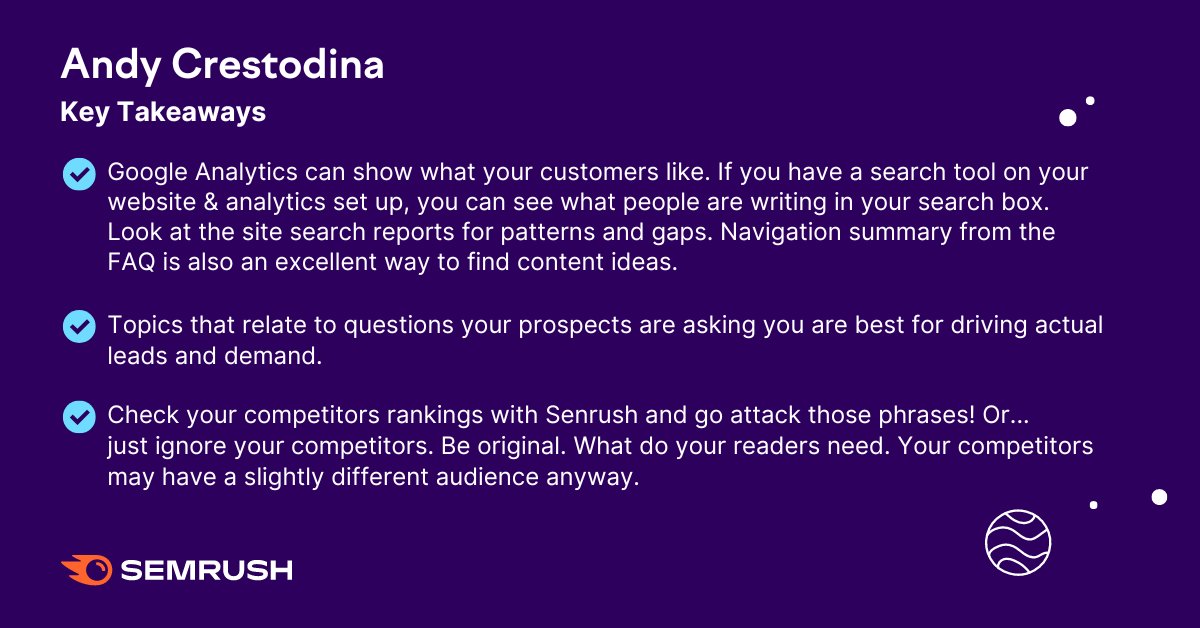SEO’s make recommendations 100% of the time. But according to a recent Ttwitter poll, they only get implemented around 30-40% of the time. 😱So what gives? Why is implementation such a blocker 🛑 and how can you overcome it?
#SEOthread @JohnMorabitoSEO
#SEOthread @JohnMorabitoSEO

Let’s start with the top reasons your recommendations sit in a dev queue.
✅Lack of understanding of the why and how
✅Lack of senior-level buy-in
✅Not tied to OKRs or KPIs
✅Not properly prioritized
✅Simply not possible
Each can be overcome.
#seothread @JohnMorabitoSEO
✅Lack of understanding of the why and how
✅Lack of senior-level buy-in
✅Not tied to OKRs or KPIs
✅Not properly prioritized
✅Simply not possible
Each can be overcome.
#seothread @JohnMorabitoSEO
Lack of understanding of the why and how behind an SEO recommendation is a sure fire way to not get anything done. 😕 Make sure the team you are asking for help understands exactly what they need to do, and WHY you are asking them to do it. 💬
#seothread @JohnMorabitoSEO
#seothread @JohnMorabitoSEO
Ensure that you're working with decision makers that can help to allocate resources for developments. This sometimes means "pitching" your client's boss, or your boss's boss. You'd best come up with a strong story on what the impact will be. 📈
#seothread @JohnMorabitoSEO
#seothread @JohnMorabitoSEO
I don't think marketers and developers do not care about technical SEO issues. They care about a performance-driven set of KPIs. ALWAYS speak to those in anything you are asking for. Sometimes this means using forecasting. 📊
#seothread @JohnMorabitoSEO
#seothread @JohnMorabitoSEO
Nothing says analysis paralysis like a list of 200 SEO changes. Prioritization based on effort, impact and reach of changes you want made is critical to getting someone to take the first step and begin making their way through the list. ✔️
#seothread @JohnMorabitoSEO
#seothread @JohnMorabitoSEO
Sometimes something you ask for may simply not be possible in a given CMS, so you need to explore new avenues or other creative solutions for implementing the change. 💭 One such solution is PageImprove from Semrush!
#seothread @JohnMorabitoSEO
#seothread @JohnMorabitoSEO
Here are some the best ways you can ensure your changes get implemented:
✅Forecast the impact
✅Speak to the business value of the work
✅Help stakeholders to understand the value
✅Consider a/b testing with SplitSignal
✅Carefully document
#seothread @JohnMorabitoSEO
✅Forecast the impact
✅Speak to the business value of the work
✅Help stakeholders to understand the value
✅Consider a/b testing with SplitSignal
✅Carefully document
#seothread @JohnMorabitoSEO
Out-of-the-box solutions: SEO tools like PageImprove can allow you to implement changes without development support which at times can be a life saver. Consider creative ways you can implement changes yourself and avoid the dev queue altogether! 🏅
#seothread @JohnMorabitoSEO
#seothread @JohnMorabitoSEO

Want to learn more about how to get your SEO changes implemented? Check out my post for some more tips!
social.semrush.com/3fE27dA.
#seothread @JohnMorabitoSEO
social.semrush.com/3fE27dA.
#seothread @JohnMorabitoSEO
• • •
Missing some Tweet in this thread? You can try to
force a refresh












